Using the Clerk.io Extension with Magento 1
Platforms:
my.clerk.io Data Sync Settings Overview
To access your sync settings between Clerk.io and your Magento 1 extension, head over to my.clerk.io, click “Data” on the left-side menu, then scroll down to “Data Sync Settings”.
Here, you’ll find options to customize how your product, customer, and order data syncs with Clerk. More information on the Magento 1 Extension, accessed through your Magento 1 Admin portal, below.
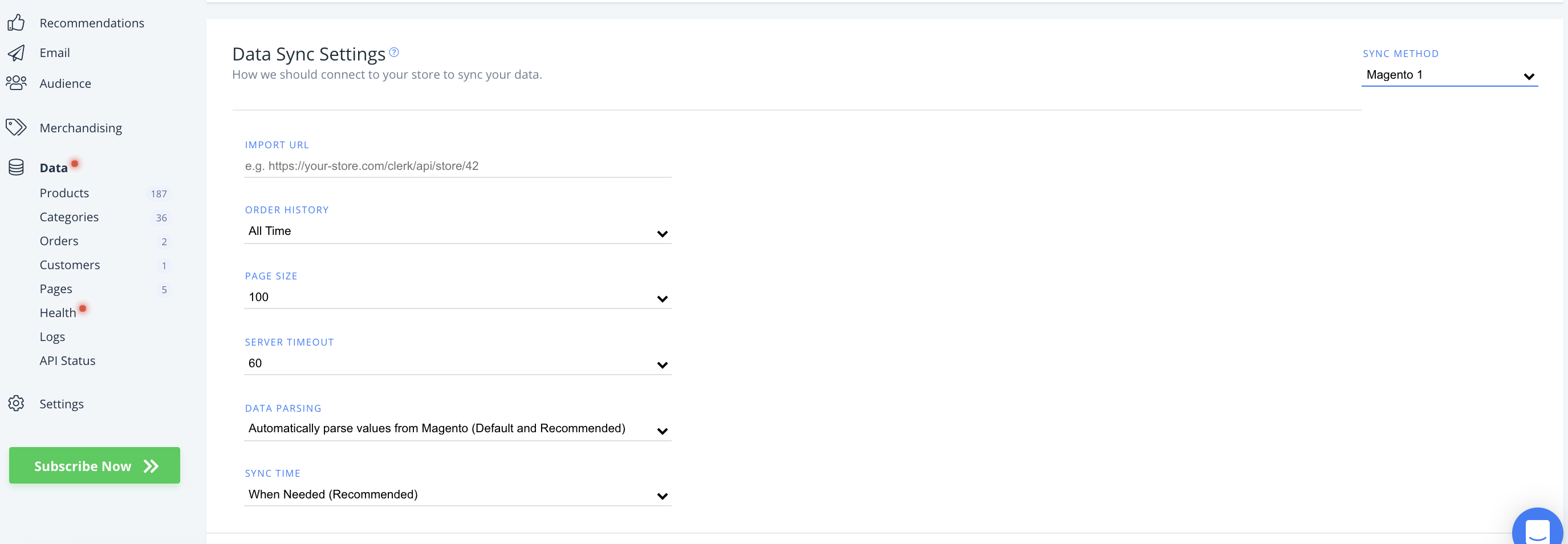
Order History
Choose the amount of time you’d like to retroactively sync order data from your store to Clerk.io here.
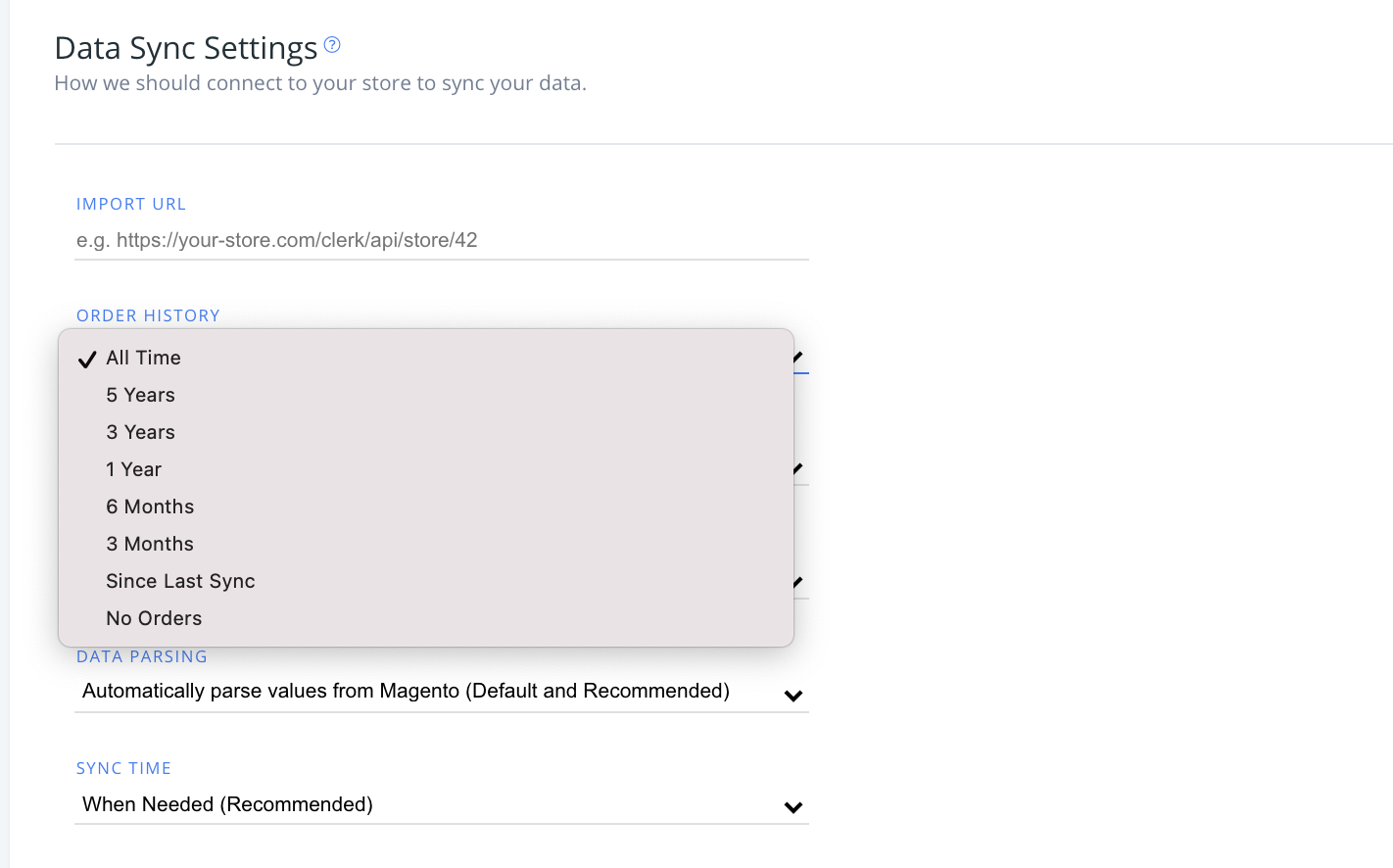
Page Size
Choose the page size of your synced data in the dropdown below. Smaller page sizes may help avoid host timeouts during sync, while larger page sizes may sync faster.
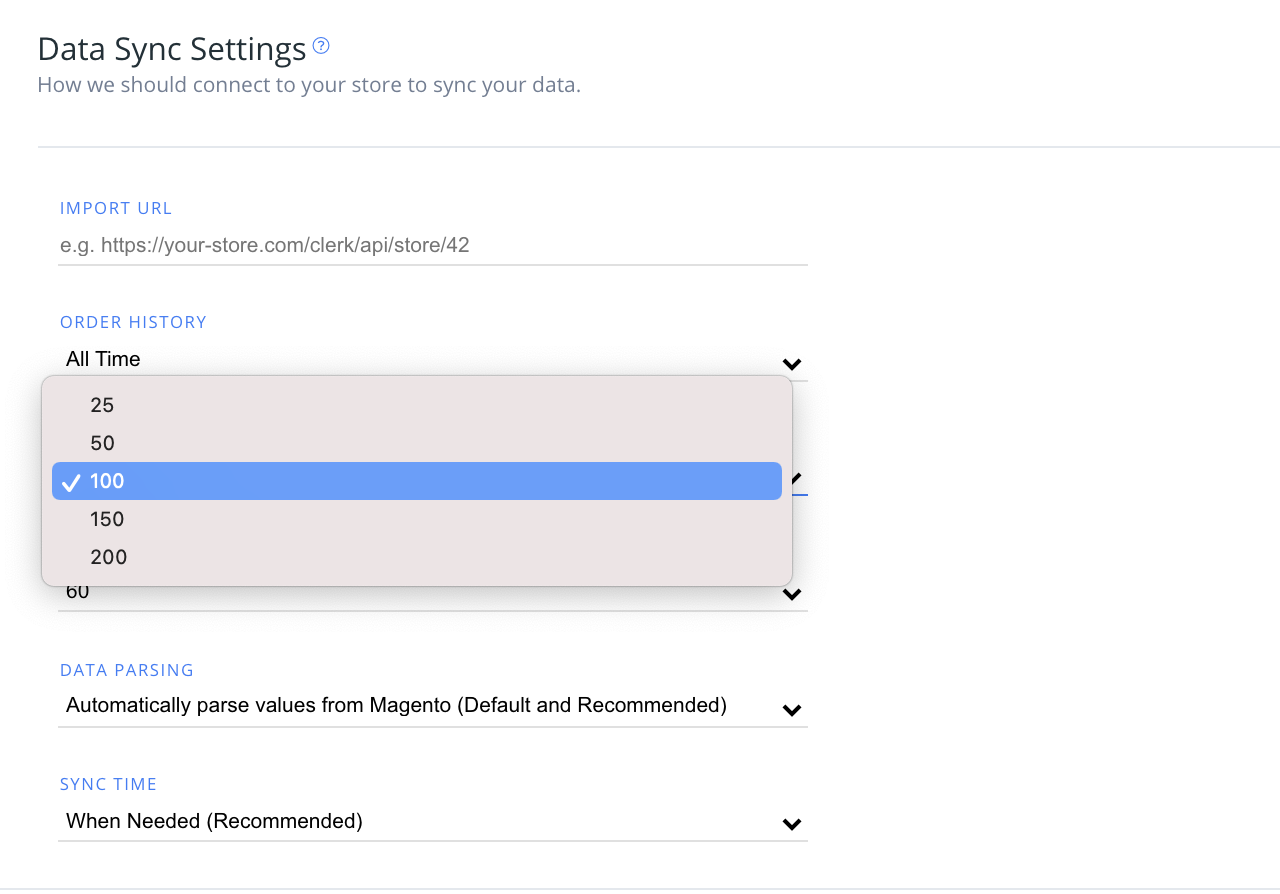
Server Timeout
Set the length of time without a response before the server times out, both to protect your data and to ensure you’ve allowed enough time for larger data sets to sync with Clerk.io. Default is 60 seconds.
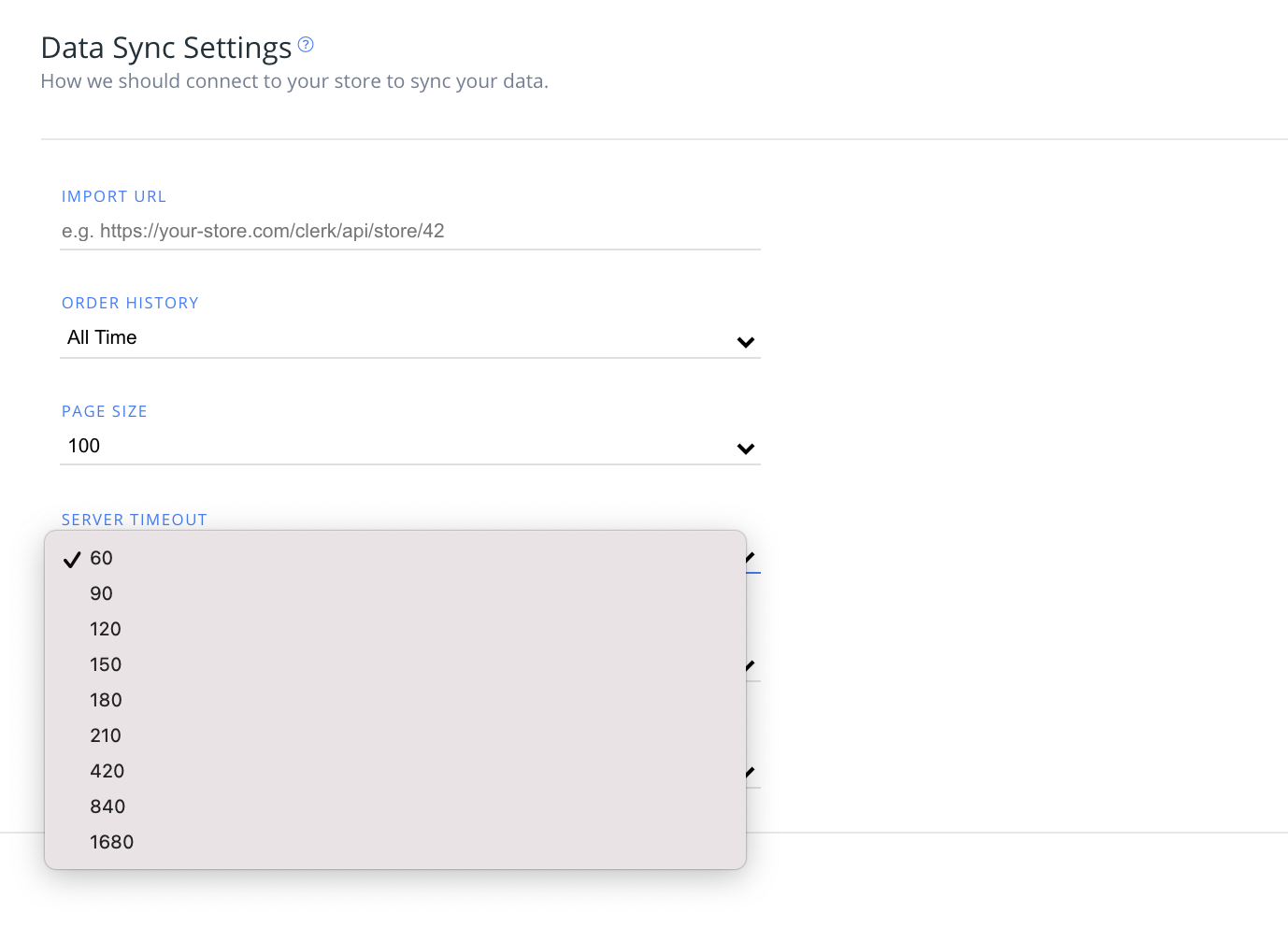
Data Parsing
Choose whether or not you’d like your Magento 1 data to parse values automatically in this section. Automatic parsing is the default and recommended option.
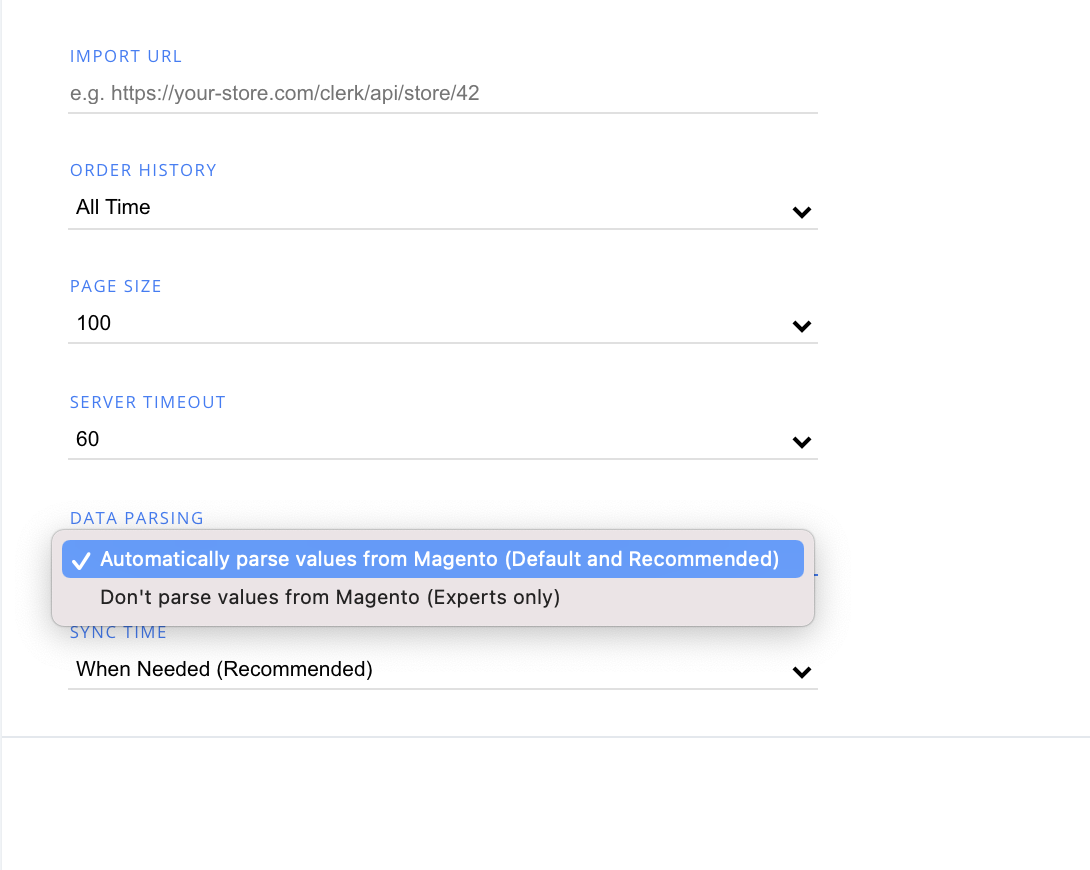
Sync Time
Set the time of day that you’d like your store data to sync with Clerk.io. The default is “when needed'.
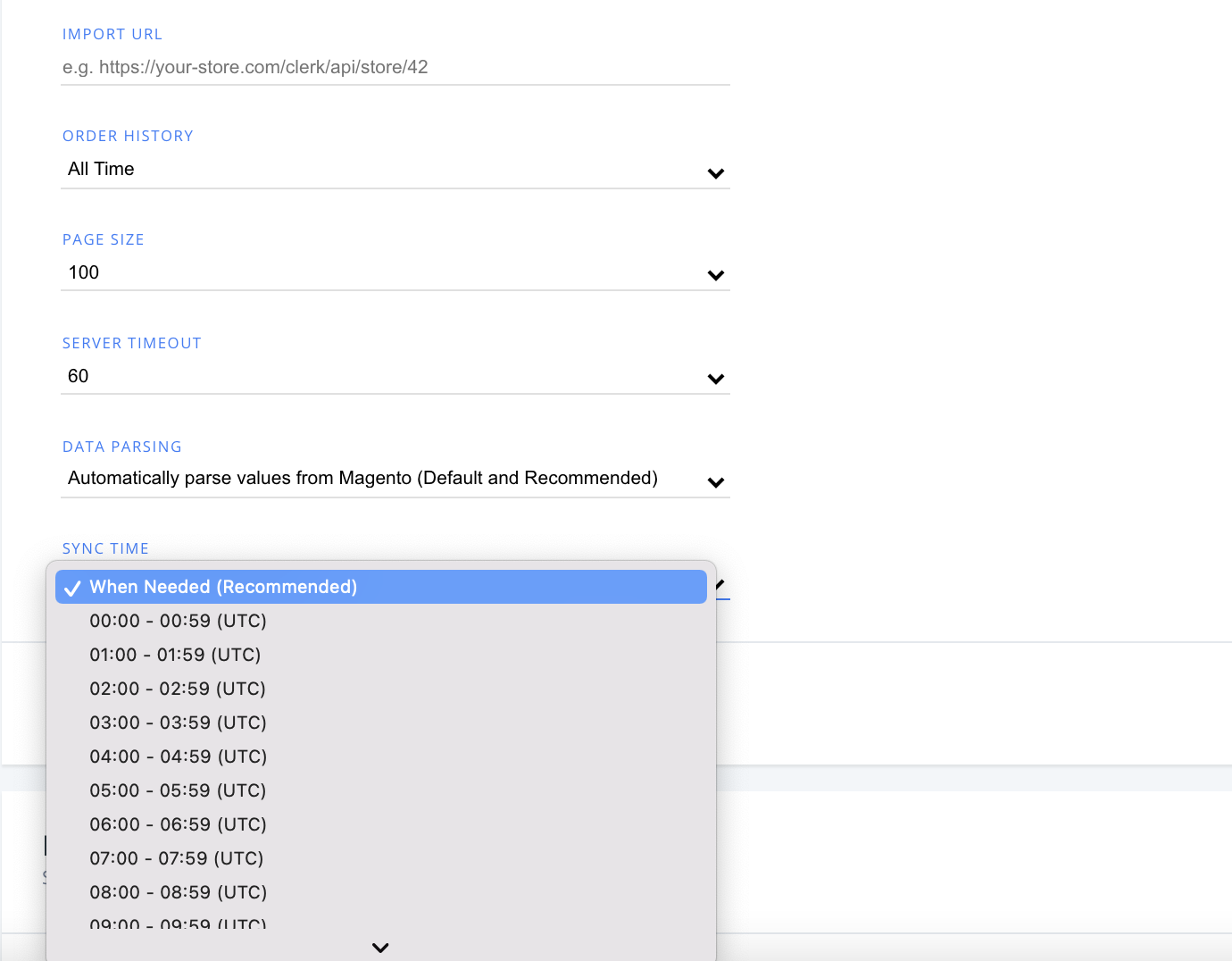
Extension Settings
If you are using v4.8.0 or a later version of the extension, you will be able to access the below settings in two ways after adding your Public and Private Keys to the extension:
- Through the Magento2 backend in Clerk > Configuration > Settings
- Through my.clerk.io, under Settings > Extensions
It does not matter where you make the changes, as the extension will sync with any changes made in my.clerk.io and vice versa.
In my.clerk.io you will also be able to see your current version of the extension, your platform, and the PHP version.
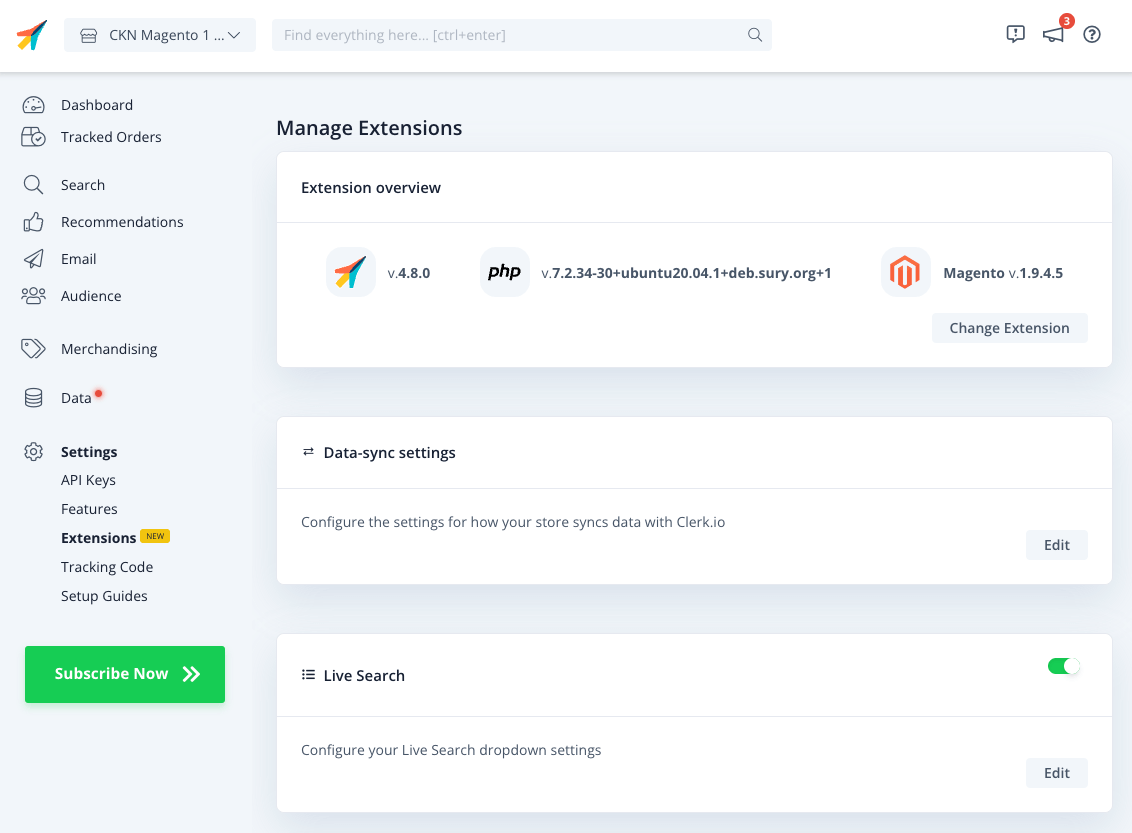
Simply click “Edit” on any setting, to see the available options:
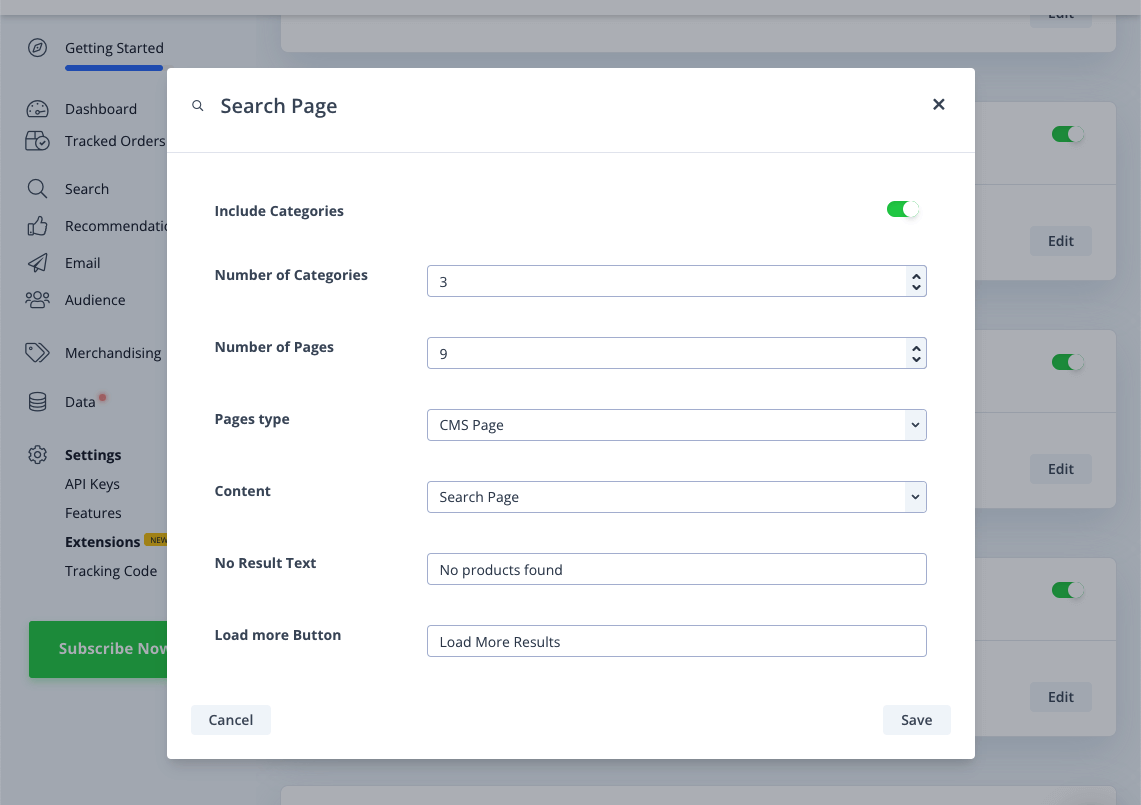
Magento 1 Extension Overview
To access your Magento 1 Clerk.io extension, log into your store’s Admin account, and choose “Configuration” > “Clerk” > “Settings”.
Clerk Settings
Set key parameters within the Clerk Settings section of the Magento 1 extension. Your ability to enable/disable the Clerk.io extension, as well as your public and private API keys are also located here.
Real-time Updates:
- Additional Fields
Include Pages
- Additional Fields
Collect Emails and Customer Baskets:
Disable Order Sync:
Include Out-of-Stock Products
Language & Import URL: These were likely set when you first installed the Clerk.io extension and synced to my.clerk.io. Should these values change, simply choose the new store language or insert the updated Import URL here.
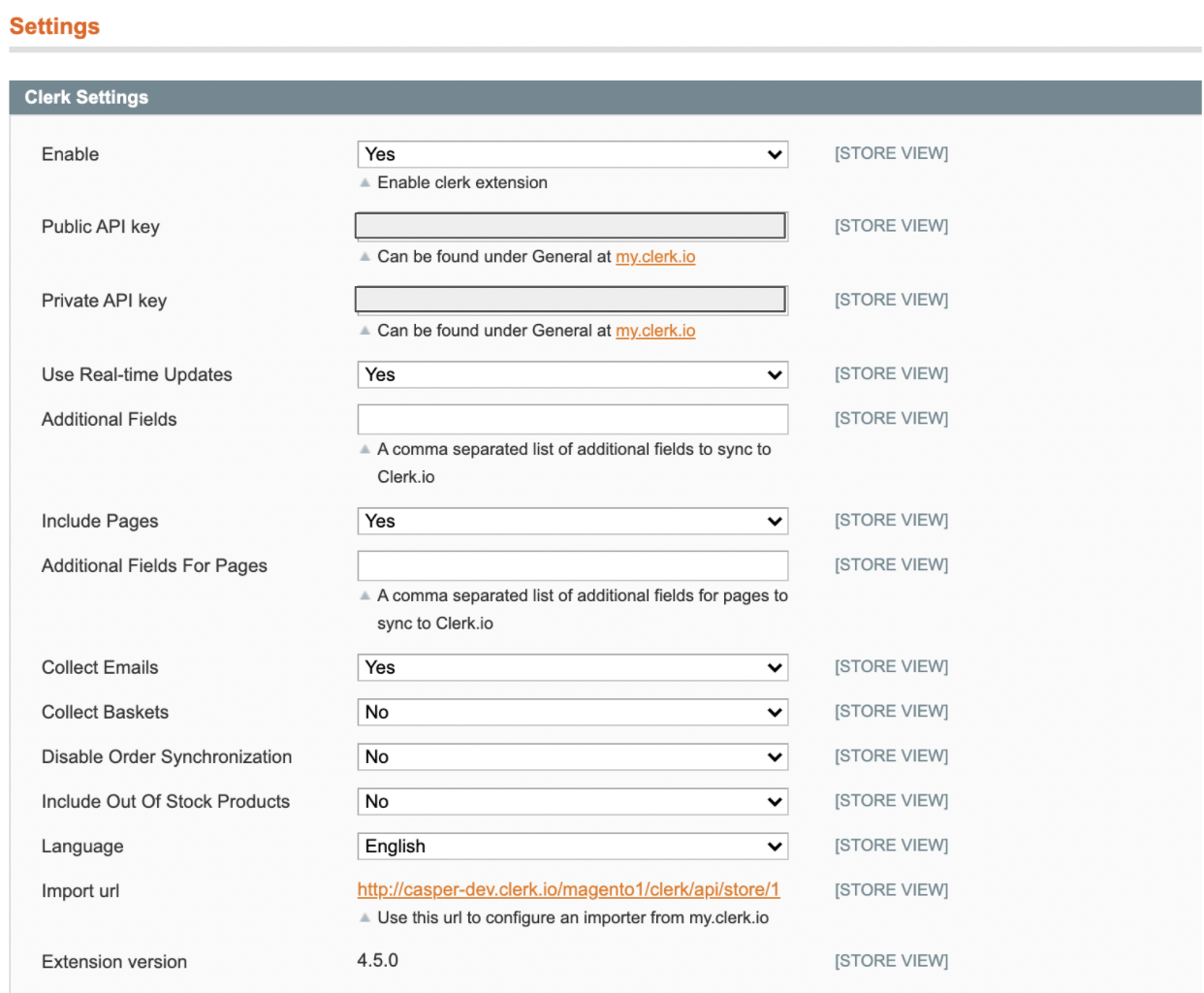
Search Page and Live Search Settings
To enable your Clerk.io Search Page, Search Page Facets, and/or Live Search, select “Yes” from the appropriate dropdown(s).
Search Page Settings:
After selecting “Yes”, options appear to enter your Search Page Content name, which matches the data-template field found in the embed code of your Content in my.clerk.io. In this example, search-page.
You can also set the text for the " Load More” button here, as well as the text shown when no results are found for a query.
Faceted Search Settings:
- After enabling faceted search, you are given the option to enter the attributes you’d like to appear as facets on your Search Page. You can also label these facets with the desired names, and choose the order in which each facet appears.
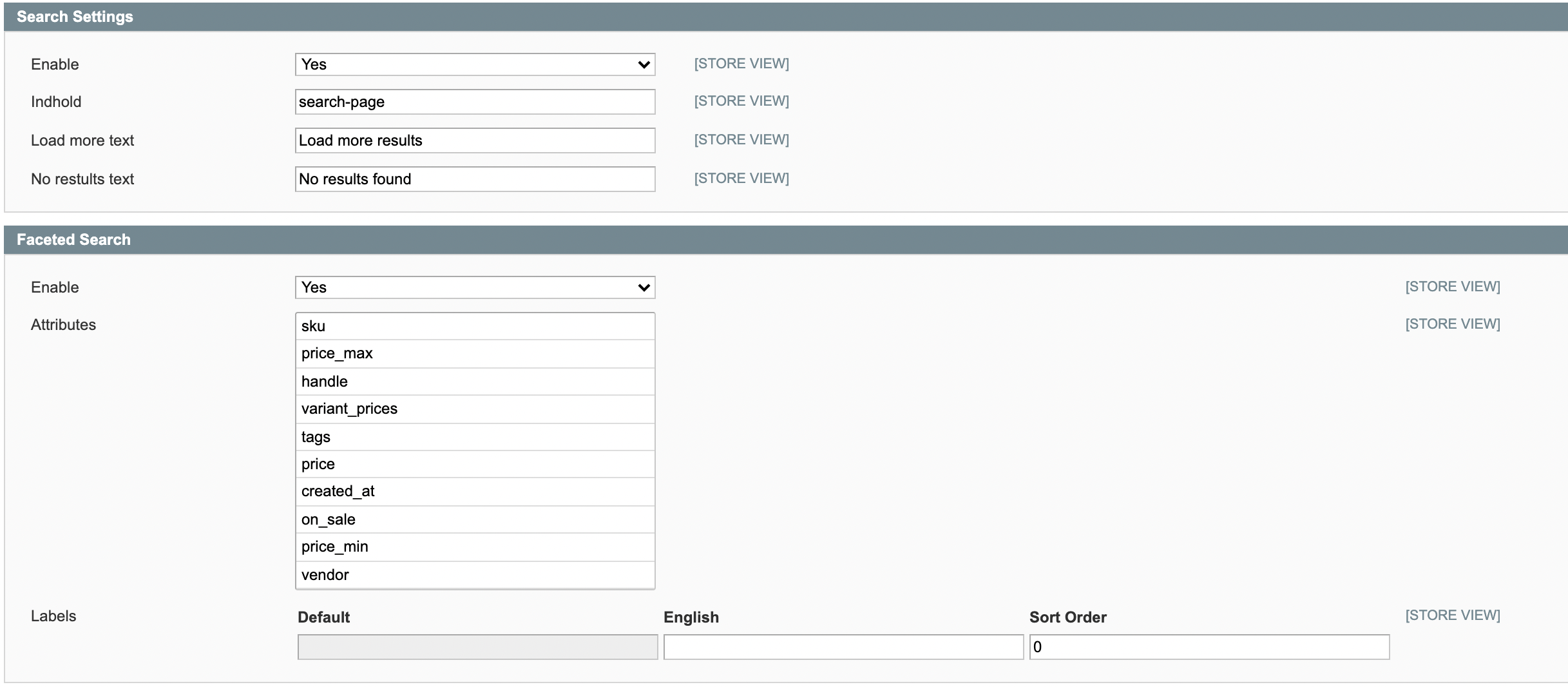
C ustomising Your Search Page Facets
- Clerk.io allows you to style your search page facets from within the design and you can display this by referencing it with the design ID field. The design ID can be found in the Clerk.io backend, on the far left column of each design on the design overview page and in the bottom left of the page once you enter the design to edit.


Note: You are now able to call the data for categories and pages in your Search page in the same way you would in your Live search, giving you a larger range of information to engage your customers with. For more information you can check here.
Live Search Settings
After enabling Live Search, you can select whether or not you want Categories to show in your results, as well as the number of search suggestions, categories, and content results to show within Live Search.
You also have the option to choose what page types display as search results, for example “CMS Pages” or “Blog Posts”.
You can choose the position of the live search dropdown from your search box with Dropdown Positioning.
Provide the Content name for your live search next, which can be found next to data-template in your Live Search embed code within your my.clerk.io Content. This is likely live-search.
Last, provide your Live Search Input Selector, which can be found by inspecting your webshop’s search box with your browser, and identifying the ID or class associated with its input. In this example, #search.
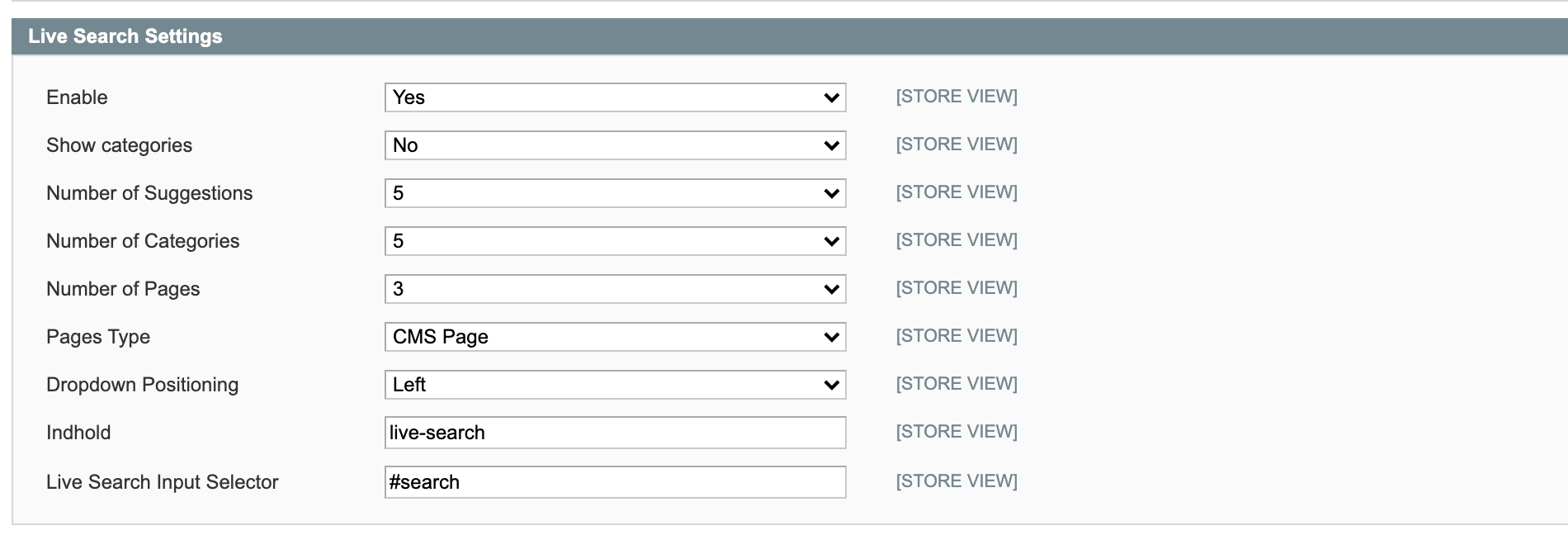
Powerstep, Exit Intent, Category Page, Product Page, and Cart Settings
Similar to Search, enable your Clerk.io Powerstep, Exit Intent, Category Page, Product Page, and Cart settings by selecting “Yes” from the appropriate dropdowns.

After selecting “Yes” from the appropriate dropdown, you’re provided a box to enter the Content name for the Clerk.io Recommendations you’d like to include on that page.
Just like the Search functionalities, you can find the content name next to data-template in the embed code within my.clerk.io > Recommendations > Content. In this example, we’ve enabled Category Page settings, and included category-page-popular as our content.
You can add multiple content names as comma-separated values here, if you’d like to show multiple sliders on that page, for example.

Logging Settings
Enable and adjust your log settings here. Select “Yes” to enable logs, then select the “log level” for which returns you’d like to log. Options for logging levels include " errors only", " error + warn", and " error + warn + debug".
You can also select where to log these messages, either my.clerk.io or to a file.
